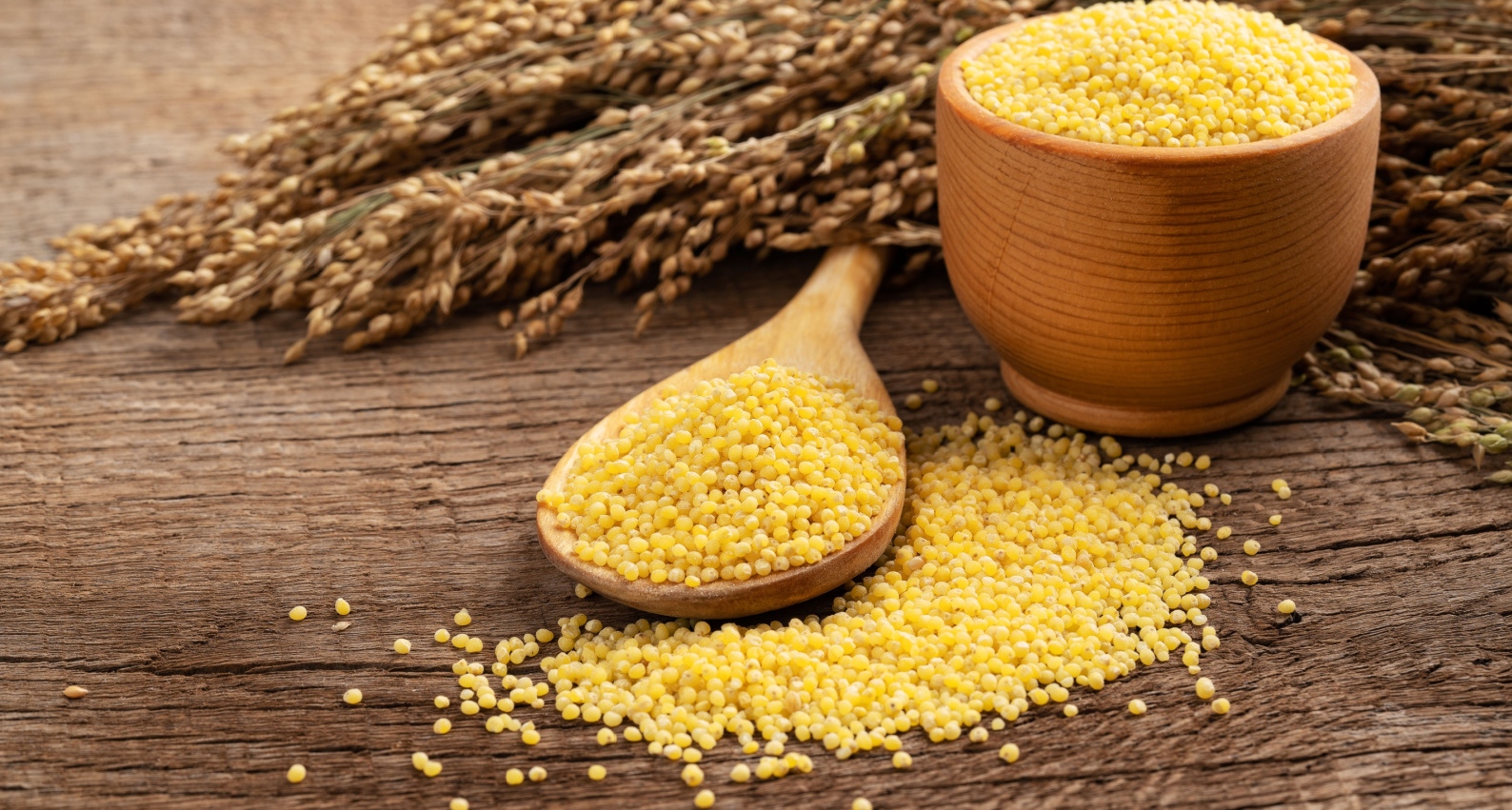
Millets, often referred to as “food grains of the poor,” are grown and consumed worldwide. Currently, there is a renewed interest in millets due to their numerous health benefits, low environmental impact, and adaptability to diverse growing conditions. In fact, the United Nations declared 2023 as the “International Year of Millets”, highlighting the importance of these crops for food security and sustainable development. This is expected to increase the demand for millets globally and create new opportunities for farmers and entrepreneurs in the millet value chain.
Millets are a group of small-seeded grasses that are highly nutritious and gluten-free. They are rich in dietary fiber, protein, vitamins, and minerals, and low in glycemic index, making them an ideal food. With a low carbon footprint and minimal water and fertilizer requirements, millets are environmentally sustainable crops.
India – The no.1 millet producer
India is the largest producer and processor of millets in the world, with a long history of cultivation and consumption of these grains. Millets are widely grown in different regions of the country, including pearl millet in Rajasthan and Gujarat, finger millet in Karnataka and Tamil Nadu, and foxtail millet in Andhra Pradesh and Telangana. Furthermore, millets are used as livestock feed and for industrial purposes such as biofuels and building materials.
The Indian government has been promoting the cultivation and consumption of millets through various initiatives, such as the Millets Mission, which aims to increase the production and processing of millets in the country. For farmers to get fair prices for their produce, the government has set a minimum support price for millets.
Millet export
The government undertook various initiatives to increase millet exports. An action plan was prepared by apex agricultural export promotion body, Agricultural and Processed Food Products Export Development Authority (APEDA) to concentrate efforts and increase export of millet and its value-added products. Following are some activities in this plan:
These regulations and policies have helped in promoting millet production and consumption in India.
PLI scheme
The Ministry of Food Processing Industries (MoFPI) implemented the Production Linked Incentive (PLI) scheme for food products since 2021–22. In the current fiscal year, an outlay of Rs. 800 crore was set aside to encourage millets in the ready-to-cook/ready-to-eat (RTC/RTE) segment. There will also be efforts to incentivize these products. This category approved 30 applications in total, including 22 SMEs and 8 large enterprises. Packaging and branded RTC/RTE food goods with more than 15% millets by weight/volume in the product composition are eligible for these incentives.
Many major brands such as Britannia, Hindustan Unilever, ITC, Tata Soulfull, and Nestle are now experimenting with adding millets such as jowar, bajra, and ragi in their food products.
For instance, Britannia, has introduced millet bread with no additional maida. It is loaded with nutrients like ragi, jowar, bajra, and oats, as well as fiber and minerals that give consumers an easy method to include millet-based foods in their diets.
Challenges
Although millets are produced in roughly 21 states in India, the widespread promotion of highly productive wheat and rice varieties slowed its production over time.
Considering these difficulties, India’s request to the Food and Agriculture Organization for the designation of 2023 as the “International Year of Millets” being well received is encouraging and will undoubtedly result in millets becoming widely used.
However, it is essential to develop a robust millet value-chain with complete millet demand generation solutions.
Conclusion
The rising demand for millets presents a plethora of opportunities for various stakeholders in the agriculture and food industries. Government regulations can play a crucial role in promoting the cultivation and consumption of millets. With all the support and cooperation millets are gaining, can they become the most consumed grains worldwide?
Superlative responsiveness and creativity. The professionals with whom we have worked have been significantly responsive.